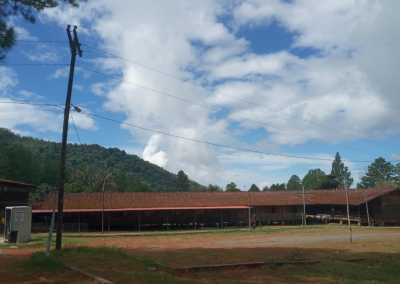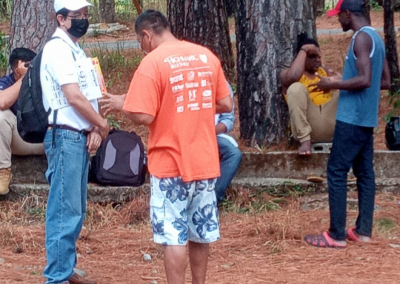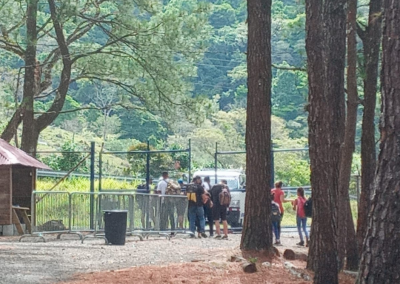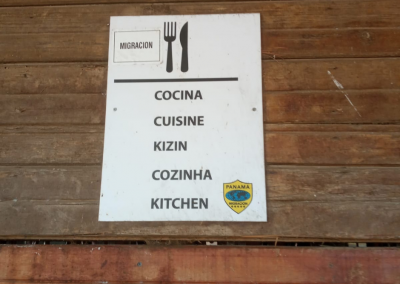The National Human Mobility Commission and the Ministry of Justice and Peace of the Chiriquí diocese negotiated with the Migration institution the possibility of carrying out a visit to the shelter for migrants located in Gualaca, Chiriquí province . The objective of the visit was to verify the situation of the stay and the human rights of the migrants who were in this refuge center.
The team that carried out the visit was made up of Rigoberto Pitti, Ligia Figueroa (both members of justice and peace from the diocese of David), the parish priest of Gualaca Juan Landau and two members of JPIC and the Franciscan Network for Migrants of the Franciscan Family. from Chiriquí, Panama: Br. René Flores, OFM and Rafael Lara.
We arrived at the shelter around 9:00am and were received by the officers in charge of migration and the border police. In addition, there are kitchen managers, among other workers, in total there are 50 people who attend the shelter. Also, there were some members of the IOM who come to provide recreation to the boys and girls. After being welcomed, we divided into two groups, one that was in charge of interviewing the migrants and the other group the government officials. I share some aspects that emerged from the dialogues and the observation of the place.
Previously, this shelter center served for youth training. It was established as a refuge, because the government wanted to give a response to hundreds of Cuban migrants who were not allowed to migrate to Costa Rica in 2016. These migrants were detained at the “Paso Canoas” border, in Panamanian territory. When this Cuban migrant crisis occurred, the diocese with Catholic institutions responded by providing humanitarian assistance and setting up temporary shelters for these migrants.
According to data from migration officials in this refuge center, in 2019 about 30,000 passed through, in 2020 about 90,000, and in 2021 there were more than 130,000 migrants
“I saw a new heaven and a new earth, because the first heaven and the first earth had disappeared, and the sea is no more.” Ap. 21:1
When we made this visit there were more than 200 migrants, including many children and entire families. The atmosphere is calm in the refuge, these days the majority are Haitians, some Venezuelans and Cubans. Also, there was a group of Nicaraguans detained about two months ago who were caught crossing the border with a “coyote” human smuggler. They are currently in the deportation process to Nicaragua. This case has several anomalies and legal procedures by the state are very slow.
In terms of treatment at the shelter there is no violation of human rights. They are treated with respect and human dignity, and there is no sign of racism or xenophobia on the part of the shelter officials. In addition to the issue of the right to drinking water, the diocesan commission will investigate the legal situation of the Nicaraguan migrants who are detained in the shelter.
It is painful to see the sad faces of the people there. When you talk to them and you feel their great desire for peace and tranquility in their lives, which they do not have at this time. It is impressive to hear the journey they have made, traveling from Brazil and others from Venezuela, Colombia, traveling over land and sea, the most dangerous being the passage through the jungle in the Darien Gap. In that jungle, they pay a guide, and even so they are often intercepted by groups of criminals who rob and sexually abuse the women.
One story they told me, very sad, is that on a journey through the jungle in a group of migrants there were two children who were not accompanied by adults and the youngest child died of illness and his older brother, who was a child, carried him for two days holding his body while they walked. The adults continued to insist on burying him until he accepted, and his little brother was buried in the jungles of Darien.





